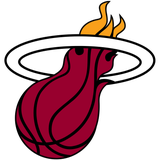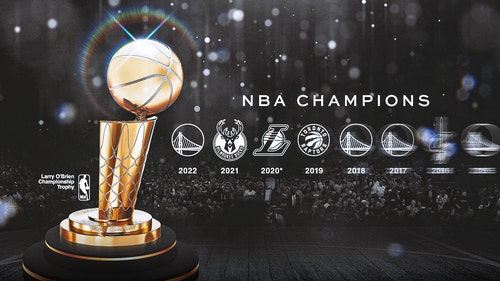
Inconsistency continued to plague Mario Chalmers in transition season

Few players to have worn the Miami Heat jersey have been as polarizing as Mario Chalmers.
Love him or hate him, his up-and-down play has undeniably frustrated his coach, his teammates and Heat fans as much as they've celebrated a timely basket or a steal over the years. As cool and confident Chalmers is in his abilities -- a trait that came in handy as the starting point guard during the Big 3 era -- he is just as likely to struggle through long stretches of the season or from quarter to quarter within a game.
The same can be said of the 2014-15 season, which served as a microcosm of Chalmers' career. In one solid stretch of play in November, he bounced back from a forgettable 2014 NBA Finals to score in double figures in eight of nine games, and he had 10 or more assists in two of those games. But when the Heat were fighting for their playoff lives in April, Chalmers limped to the finish line by averaging 4.7 points on 28.2 percent shooting, 2.6 assists and 1.7 rebounds in just 21.4 minutes in the final month of the season.
Frustrations boiled over to the point in early April that Chalmers was complaining to the media that he didn't know what his role on the team was anymore. In that regard, perhaps he had a point, considering he was shuffled from starting point guard in the preseason to backing up Norris Cole while fighting for minutes with rookie Shabazz Napier to start the regular season. He started a total of 37 games but was then recast as a combo guard off the bench to back up Dwyane Wade and a newly acquired Goran Dragic.
It's certainly possible his struggles were as a result of his ever-changing role on the team or the fact that he was never really on the same page with his teammates in his role as the floor general due to team injuries, illnesses and medical conditions. During the season, Chalmers insisted he was fine with whichever role coach Erik Spoelstra wanted him to play, but it still appeared to take its toll on the six-year veteran.
"It's whatever is best for the team," Chalmers said in December about being a reserve. "If coach Spo has me in that role now, I'm just going to try to make the most of it."
Even with increased opportunities on offense without LeBron James, Ray Allen, and later Chris Bosh sharing the court with him, Chalmers' scoring only slightly increased from 9.8 points into 10.2 points but his shooting percentage dipped from 45.4 percent to 40.3 percent, and his 3-point accuracy fell to a career-worst 29.4 percent and a career-low 73 3-pointers made. Unsurprisingly, his assists also went down from 4.9 per game to 3.8.
As one of the core members of the team that reached the NBA Finals four consecutive times, the Heat could have used his leadership and his championship experience during a difficult season but instead had to deal with the effects of his erratic play and shooting.
WHAT HE DID RIGHT
When he was on his game and plugged in, Chalmers brought the necessary aggressiveness and led the offense when Wade or Dragic were resting. Defenses still had to respect his shot -- particularly from the corners -- and his ability to penetrate and kick out to a shooter continued to be valuable, even if the player waiting out on the perimeter wasn't as deadly a marksman as Allen, James Jones or Shane Battier were.
WHERE HE NEEDS TO IMPROVE
It's all about consistency and maintaining good habits for Chalmers at this stage of his career. Time and again, he negates his positive moments by doing something foolish such as fouling a 3-point shooter or committing an unforced turnover. His 11.76 player efficiency rating (down from 14.06 in 2013-14) tells a similar story about his erratic play, and it was his lowest PER since the 2010-11 campaign, the last season in which he was also not a full-time starter. Like many of his teammates, his long range accuracy must also improve in order for the Heat to compete with elite teams.
BEST GAME
Most of his better games came in losing efforts, but his performance in a one-point home victory against the Charlotte Hornets on Nov. 23 was indicative of his early season success. In 38 minutes, Chalmers tallied 20 points on 5-of-8 shooting, 10 assists and four rebounds in his return to the starting lineup while Cole sat with a dislocated finger. His aggressiveness paid off with 10 free throws, of which he knocked down nine.
LOOKING AHEAD
Entering another contract year, Chalmers must show more consistency and veteran poise if he wants to be a part of the next phase of the Heat. His numbers fell across the board, aside from a slight uptick in scoring, but above all else he must continue to be a playmaker and strike a balance between facilitating for others while looking for his own shot in whichever role Spoelstra assigns him. With Wade and Dragic firmly entrenched as the starting backcourt and with Napier on the rise, Chalmers must have a solid year to continue with Miami beyond next season.
You can follow Surya Fernandez on Twitter @SuryaHeatNBA or email him at SuryaFoxSports@gmail.com.


